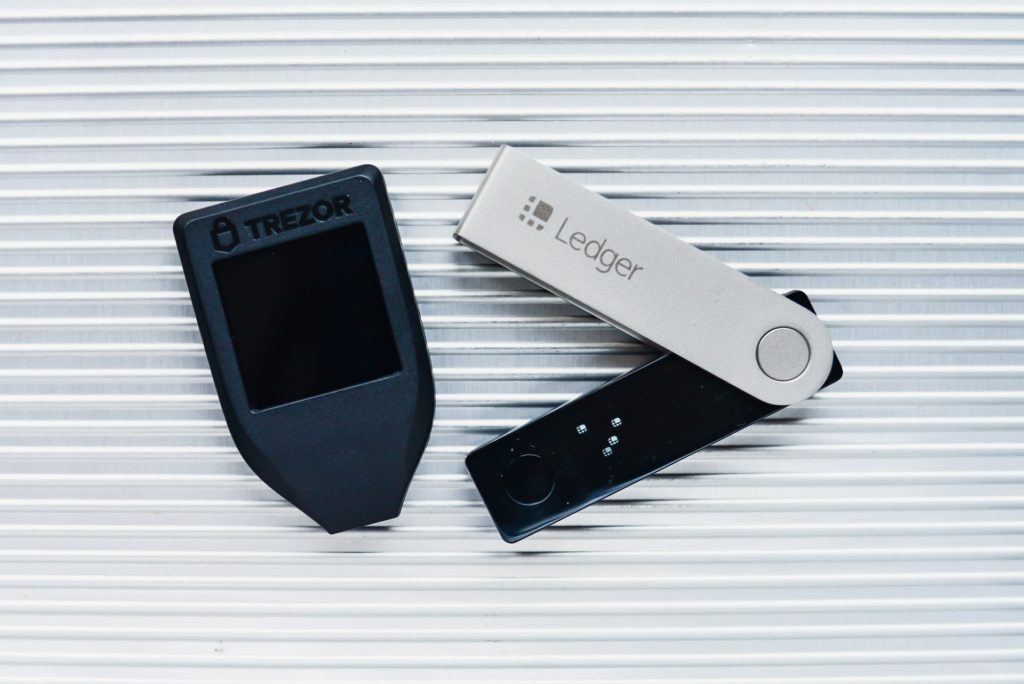Learning how to choose the right crypto wallet can be overwhelming, especially when starting out. Trust me, I’ve been there! Back in 2017, when I first dipped my toes into crypto, I thought keeping my Bitcoin on an exchange was perfectly fine. Let’s say I learned my lesson the hard way!
Did you know that over $3 billion in crypto was stolen through various wallet hacks last year? That’s a staggering number, and it’s exactly why choosing the right crypto wallet is crucial. I remember staying up late one night, frantically moving my coins after hearing about yet another exchange hack. Not fun!
Here’s the thing – your crypto wallet is your personal bank vault in the digital world. But unlike traditional banking, there’s no customer service hotline to call if something goes wrong. That’s why I’m sharing everything I’ve learned over the years about choosing the right crypto wallet. From costly mistakes to eureka moments, I’ve experienced it all so you don’t have to!
Let’s dive into what matters when selecting a crypto wallet. Whether you’re a complete beginner or looking to upgrade your current setup, I’ve got you covered with practical, real-world advice that could save you from some serious headaches down the road.
Choosing The Right Crypto Wallet Type

Man, I wish someone had explained this to me when I first started! Let me break down the different types of crypto wallets in a way that actually makes sense.
Hardware wallets, or “cold storage” as the crypto nerds call them, are basically like tiny, super-secure USB drives for your crypto. I remember the day my first Ledger arrived in the mail – I felt like a kid on Christmas morning! These bad boys are pretty much the Fort Knox of crypto storage. They’re not connected to the internet unless you specifically plug them in, which makes them practically unhackable.
The cool thing about hardware wallets is that they’re totally offline most of the time. Popular brands like Ledger and Trezor are gonna run you anywhere from $50 to $200. Seems steep? Well, I once lost $500 worth of crypto using a sketchy online wallet, so trust me – it’s worth every penny.
Software wallets, or “hot wallets,” are programs you install on your computer or browser extensions. Think of them like your everyday checking account – super convenient but not where you’d keep your life savings. I use MetaMask for my day-to-day crypto stuff, especially when I’m playing around with DeFi platforms. Just remember – your computer needs to be clean of malware, or you might as well hand your crypto over to hackers on a silver platter!
The thing about software wallets is they’re usually free, which is awesome for beginners. But here’s a pro tip: never, ever store your recovery phrase on your computer. I learned that one the hard way when my laptop crashed, and I nearly had a heart attack thinking I’d lost access to my wallet. Now I keep it written down in three different physical locations – may be overkill, but hey, peace of mind is priceless!
The reputation of the software wallet maker is also an important factor because a wallet can have built-in security flaws (whether by design or by accident) that put your crypto assets at risk. To check that the wallet is reputable, search for it on forums such as the Cryptocurrency Reddit or the Bitcoin.com Forum to see what people are saying about it.
Some wallets, like the Bitcoin.com Wallet, have been around since 2017 and are used actively by millions. You can see what people are saying about it in the above-mentioned forums, as well as on the App Store, Google Play, and Trust Pilot.
Mobile wallets are like the convenient corner store of the crypto world. They’re perfect for smaller amounts and daily transactions. I use Trust Wallet when I’m out and about – it’s super handy for those times when you need to make a quick trade or show someone how crypto works. The QR code scanning feature is a game-changer for making payments in crypto-friendly shops.
Let’s dive into the world of multi-signature wallets. I gotta tell you, when I first heard about multi-sig, I thought it was just another fancy crypto buzzword. Boy, was I wrong!
Multi-Signature Wallets – Let me share a quick story. A few years back, I had this brilliant idea to manage a small crypto investment club with some friends. We pooled our funds into a regular wallet, with just one person holding the keys. Yeah, you can probably guess where this is going. After a heated disagreement about whether DOGE was a legitimate investment (don’t judge), we realized we needed a better system. Enter multi-signature wallets.
Think of a multi-sig wallet like that nuclear launch system you see in movies – you know, where two people need to turn their keys at the same time? It’s kinda like that but for your crypto. Instead of just one person having all the power, multiple people need to approve transactions. Pretty neat, right?
Here’s the cool part about multi-sig setups: you can customize them based on your needs. Want a 2-of-3 setup where any two people out of three need to approve? Done. Need a more complex 3-of-5 arrangement for your business? No problem. It’s like creating your little crypto democracy.
Let me tell you about the time I learned the importance of testing your multi-sig setup BEFORE putting in significant funds. There I was, feeling all proud of myself for setting up a 2-of-3 wallet. I transferred a small test amount, and then immediately tried to move it. Turns out, I had somehow messed up the configuration, and we couldn’t get the required signatures. Thank goodness it was just a test amount!
Something that often trips people up: the difference between requiring ALL signatures and requiring SOME signatures. A 3-of-3 wallet means everyone must sign off on transactions. Great for security, but what happens if one person loses their key? Or worse, gets hit by a bus? (Sorry for being morbid, but this stuff matters!) That’s why many people opt for a 2-of-3 setup – it provides security while still allowing for some flexibility.
Speaking of flexibility, multi-sig wallets are fantastic for businesses. I helped set one up for a small crypto trading firm, and it was like watching their whole operation level up. No more single points of failure, no more trust issues. Every major transaction needed multiple pairs of eyes on it. Sure, it slowed things down a bit, but in crypto, sometimes slower is safer.
Some common multi-sig pitfalls. First up: backup plans. You need them. Like, seriously need them. I can’t stress this enough. Each person involved should have their key backed up securely, and everyone needs to know the recovery procedures. It’s like having a fire escape plan – you hope you never need it, but you’ll be really glad it’s there if you do.
Another thing to watch out for is gas fees on Ethereum-based multi-sig wallets. Oh man, those can add up quickly since you’re essentially doing multiple transactions. I learned this the hard way during the last bull run when gas fees were through the roof. Each signature was costing an arm and a leg!
But here’s something really exciting about multi-sig – it’s not just about security anymore. Some platforms are using multi-sig for governance in DAOs (Decentralized Autonomous Organizations). Imagine running an entire organization where major decisions require multiple stakeholders to sign off. The future is wild, folks!
If you’re thinking about getting a multi-sig wallet, start by asking yourself these questions:
- How many people need to be involved?
- What’s the right balance between security and convenience?
- What happens if someone loses their key?
- How will you handle emergencies?
- Which blockchain will you use? (Different chains have different multi-sig implementations)
I’ve found that most people do well with a 2-of-3 setup. It’s like the Goldilocks of multi-sig – not too restrictive, not too loose, just right. Plus, it gives you a backup if one person is unavailable or if something goes wrong.
Remember, multi-sig isn’t just for businesses or large amounts. Even for personal use, having a multi-sig wallet with trusted family members can be a great way to protect your long-term holdings. Think of it as your crypto’s retirement plan – safe, secure, and well-protected.
Oh, and one last tip: practice, practice, practice! Set up a test wallet with a tiny amount and run through different scenarios. What happens if one person is unavailable? What if someone loses their key? Trust me, you want to figure this stuff out before you need it, not during a crisis.
Stay safe out there, crypto fam! And remember, when it comes to multi-sig, the extra effort up front can save you a whole lot of headaches down the road.
Key Security Features:
Alright, this is where things get serious – and trust me, you want to pay attention to this part! Security features are what separate the “okay” wallets from the “oh wow, my crypto is actually safe” wallets.
Private key management is absolutely crucial. Think of your private key as the master password to your digital vault. I keep mine written down (yes, with actual pen and paper!) in multiple secure locations. Never, ever store it digitally – I made that mistake once and spent a week having anxiety dreams about hackers!
Two-factor authentication (2FA) is non-negotiable in my book. Sure, it’s a pain to whip out your phone every time you want to access your wallet, but it’s way less painful than losing your crypto! I use Google Authenticator instead of SMS verification – after hearing horror stories about SIM swap attacks, I’m not taking any chances.
Backup solutions – this is where I see so many newbies mess up. Your recovery phrase is like your get-out-of-jail-free card if something goes wrong. Write it down! No, seriously, WRITE IT DOWN! I’ve helped three friends recover their wallets because they actually followed my advice about proper backup procedures. The others… well, let’s just say they learned an expensive lesson.
Multi-signature support might sound fancy, but it’s actually super practical. It’s like having multiple keys to a safe – you need more than one to open it. I set this up for my bigger holdings, so even if someone somehow gets one key, they still can’t access my funds. It’s saved my bacon more than once!
Comparing Costs and Features:

Let’s get real about what you’re gonna pay and what you’ll get for your money. I’ve tried everything from free wallets to the fancy premium ones, and I’ll tell you straight up what’s worth it.
Free wallets aren’t necessarily bad – I still use MetaMask for small amounts and quick trades. But here’s the catch: they usually make money through transaction fees. I once paid $50 in fees for a bunch of small transactions because I didn’t understand how gas fees worked. Rookie mistake!
When it comes to paid options, you’re looking at hardware wallets primarily. Listen, I know dropping $100+ on a Ledger or Trezor might seem steep, but think of it this way: would you keep $10,000 in a paper bag? Because that’s basically what you’re doing with some free wallets when you’re holding serious crypto.
Currency support is huge – I learned this the hard way when I bought some obscure altcoins and realized my wallet didn’t support them. Now I always check the supported currencies list before buying any new coins. Most major wallets support Bitcoin and Ethereum, but if you’re into DeFi or smaller altcoins, you’ll need to do your homework.
Exchange integration is another biggie. Some wallets let you buy and sell crypto right in the app, which is super convenient. But watch those fees! I usually check the rates against regular exchanges because sometimes the convenience isn’t worth the extra cost.
Making Your Final Decision:
Okay, this is where the rubber meets the road. After years of trial and error (mostly error, if I’m honest), here’s how you should approach making your final decision.
First, be real about your needs. Are you a day trader? A long-term HODLer? Something in between? I started with a mobile wallet but quickly realized I needed more security as my portfolio grew. There’s no shame in starting small and upgrading later – that’s way better than getting overwhelmed with complex features you don’t need yet.
The security versus convenience trade-off is crucial. I use a hardware wallet for my long-term holdings and a mobile wallet for small amounts I might need to access quickly. It’s like having a savings account and a checking account – each serves its purpose.
Portfolio size is a major consideration. If you’re investing serious money, please, please get a hardware wallet! I cringe when I hear people keep large amounts on exchanges or in hot wallets. My rule of thumb? If losing it would keep you up at night, it needs to be in cold storage.
Your backup strategy needs to be solid. I learned this lesson when my computer crashed and I thought I’d lost everything. Now I have a documented process for backing up my wallets, including regular tests of my recovery phrases. Yes, it takes time, but it’s worth it for the peace of mind.
Final Thoughts
Whew! We’ve covered a lot of ground here, but choosing the right crypto wallet doesn’t have to be overwhelming. Remember, there’s no one-size-fits-all solution—the best wallet for you depends on your specific needs, trading habits, and security preferences.
Think of it like choosing a car – you wouldn’t buy a sports car to haul construction materials, right? The same goes for crypto wallets. Match the tool to your needs, and don’t be afraid to use multiple wallets for different purposes.
Most importantly, never skip on security! I’ve shared some of my mistakes and close calls so you can learn from them. The crypto world can be wild and wonderful, but it’s also unforgiving of careless mistakes.
Take action today – review your current wallet setup, implement proper security measures, and make sure your backup strategies are solid. And hey, if you’ve got any questions or your own wallet horror stories to share, drop them in the comments below! We’re all learning together in this crazy crypto journey.
Stay safe out there, and happy hodling!



![[secure bitcoin wallets]](https://cryptohashira.com/wp-content/uploads/2024/11/1730320405725x325769434323760060-feature-120x86.png)


![[secure bitcoin wallets]](https://cryptohashira.com/wp-content/uploads/2024/11/1730320405725x325769434323760060-feature-350x250.png)

![[cryptocurrency wallets]](https://cryptohashira.com/wp-content/uploads/2024/10/1730320405708x158684408553168900-feature-350x250.png)









![[crypto asset security]](https://cryptohashira.com/wp-content/uploads/2024/11/1730320405711x482955841305053900-feature-120x86.webp)
